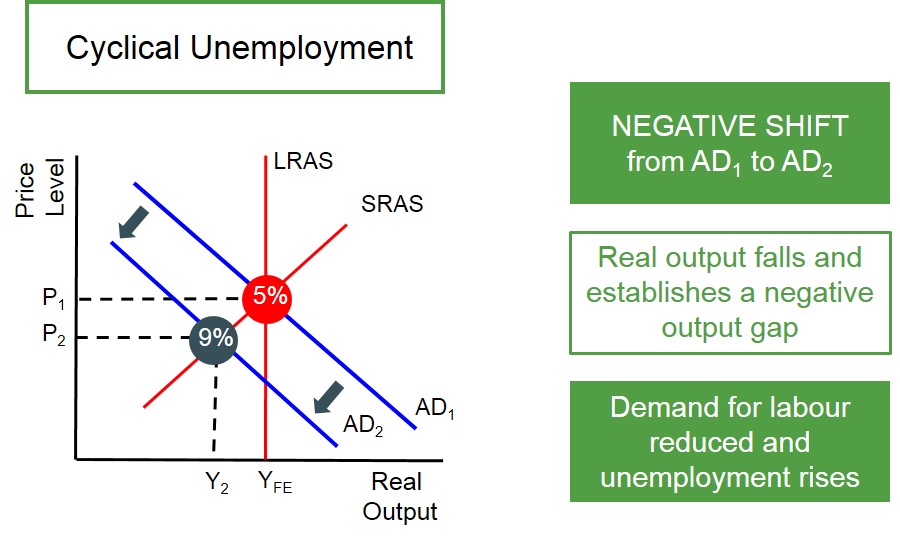Unemployment that is created as a result of a lack of demand and therefore AD is not sufficient to achieve output consistent with full employment. This type of unemployment is sometimes referred to as demand deficient unemployment.
Below is a diagram to illustrate how cyclical unemployment occurs in an aggregate demand and aggregate supply framework. The AD shifts inwards and as a result firms value workers less due to the lack of products that need to be made. This is the type of unemployment that often occurs during downturns in the economic cycle as demand starts to flag. In this instance the AD curve shifting inwards has the caused the unemployment rate to go from 5% to 9%.

AS the name suggests this type of unemployment is often unpreventable as it is a result of the natural downturn in a country's economic cycle i.e. there are periods in which workers are required to produce high amounts of output and periods where workers are not required as much to produce goods and services.